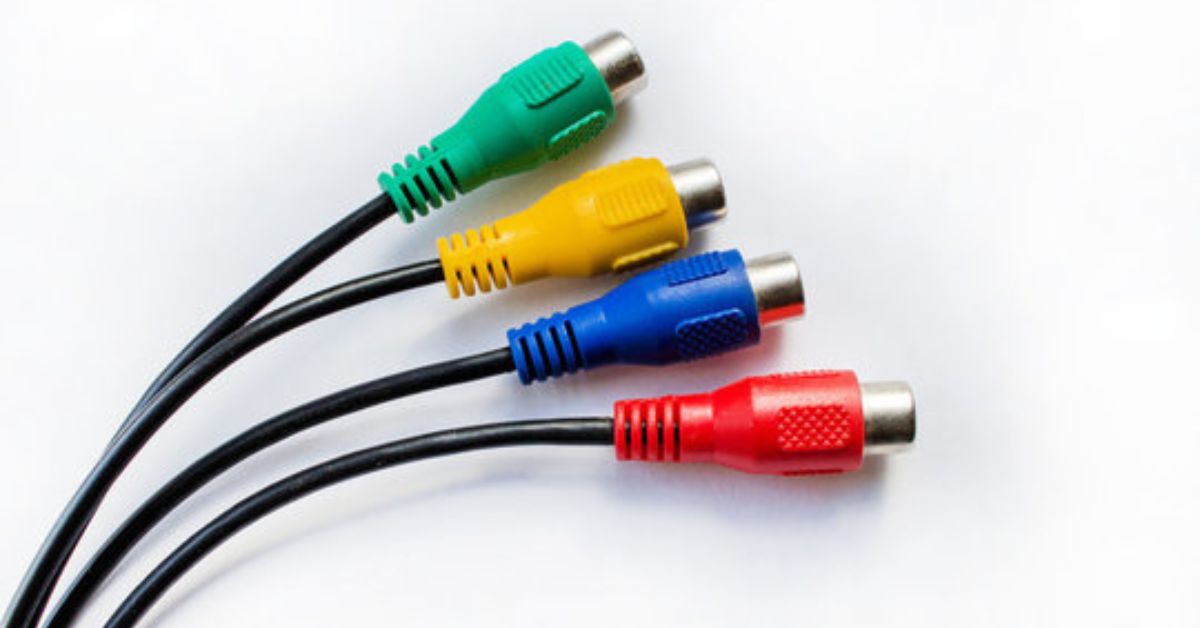Navigating the arena of video cables may be a daunting venture, especially for those who are less tech-savvy people. With many cable sorts to be had, information about their precise use and functionalities is vital for seamless connectivity in various digital setups.
One such cable type that frequently increases questions is the S-Video cable. These cables are typically employed on older televisions to enhance photograph excellence and transmit only video signals by dividing the data into color and brightness components.
If you’ve ever been puzzled by the array of cables at an electronics shop or struggled to decipher which cable suits your needs, you’re not alone.
In this blog, we can delve into the realm of S-Video cables, exploring their motive, capability, and does s video have audio.
By shedding light on the intricacies of S-Video cables, we intend to demystify this unique video cable and equip you with the knowledge needed to make informed decisions about setting up or upgrading your audio visual communication devices.
What is S Video Cable?
S-Video Cable is a video cable that utilizes 4-pin connectors to transmit video alerts. It is known for presenting advanced decisions as compared to composite video cables. S-Video cables usually are on gadgets like DVD players, televisions, and camcorders. These cables are designed to carry analog video alerts best.
They frequently attach devices like DVD gamers, satellite receivers, VCRs, and camcorders to TVs or video display units, which might be prepared with S-Video inputs. S-Video cables are valued for their ability to supply higher picture best than RCA composite cables but not as high as issue or HDMI cables.
Features of S-Video Cables
This separation allows for a first-rate stepped-forward photo compared to composite video, which combines each luminance and chrominance into a signal.
Some critical functions of S-Video cables consist of:
4-Pin S-video Connector: S-video cables typically use four-pin connectors, with the primary pins wearing luminance signals and the closing pins wearing chrominance indicators.
Superior Resolution: S-Video cables provide higher resolution than composite video, resulting in clearer and sharper photographs.
Premium Construction: High-class S-Video cables are built with bare copper braided shields, 24k gold-plated connectors, molded pressure relief, and Xtraflex jackets to ensure durability and low-loss sign transmission.
Impedance: S-Video cables have an impedance of 75 ohms, the most effective for transmitting analog video signals.
Compatibility: S-Video cables are typically observed on gadgets, DVD gamers, televisions, and camcorders.
Versatility: S-Video cables can join numerous gadgets, which include DVD gamers, satellite TV for PC receivers, S-VHS VCRs, camcorders, and even a few PCs and laptops with 7-pin TV output jacks.
Legacy Technology: Although S-Video cables are considered legacy generation, they may help S video input connect with older gadgets that don’t aid extra cutting-edge video transmission standards like HDMI.
Uses of S-Video Cables:
S-video cables are usually used to attach gadgets such as DVD gamers, VCRs, gaming consoles, and camcorders to televisions or video display units. They offer a clearer and sharper picture than composite video cables, making them perfect for devices that aid S-video output.
The advantage of S-Video cables is their ability to transmit video indicators without the lack of familiarity with composite video connections. This makes them a desired choice for enthusiasts and professionals searching for ultimate video overall performance.
Pros Of S-Video Cable:
Enhanced Video Quality: S-Video cables break up the video signal into luminance and chrominance additives, imparting higher sharpness and assessment than composite video.
Superior Resolution: S-Video cables provide better resolution abilities, resulting in clearer and sharper photos on compatible gadgets like DVD players, televisions, and camcorders.
Optimal Impedance: With an impedance of 75 ohms, S-Video cables ensure the incredible transmission of analog video signals for stepped-forward viewing experiences.
Cons Of S-Video Cable:
No Audio Transmission: S-Video cables do not carry audio signals, necessitating a separate cable for audio transmission, which can complicate the setup.
Legacy Technology: While S-Video cables offer good exceptional for general-definition video signals like 480i or 576i, they’re considered legacy technology and won’t help better S video resolutions or innovative experiment indicators like modern technologies such as HDMI.
Limited Versatility: Due to improvements in audiovisual technology, S-Video cables are getting uncommon and will need to be better suited with more recent devices that provide audio and video transmission via a single cable.
Does S video have Audio?
Contrary to popular perception, S-Video cables do not carry audio signals. They are solely designed for transmitting video alerts and no longer have the capability to transmit audio.
Therefore, if you want to transmit video and audio signals concurrently, you must apply separate cables. Or, if you feel like it’s advanced technical work, you can simply hire a Washington DC video production so that you simply enjoy the S-videos for different events.
Alternatives for audio transmission include RCA cables (Radio Corporation of America), commonly used to S video input audio devices such as DVD players, stereos, and gaming consoles to audio systems or amplifiers.
Alternatively, digital audio cables like HDMI or optical cables can transmit audio and video signals in a single connection, imparting convenience and versatility.
Conclusion:
In precis, S-Video cables are precious equipment for reaching superb video output, thanks to their capacity to split luminance and chrominance alerts.
However, it is crucial to observe that S Video input cables do not bring audio alerts and are exclusively used for video transmission. Users must utilize separate cables specially designed for audio connectivity for audio transmission.
Understanding the competencies and limitations of S-Video cables empowers customers to make informed selections when setting up their audiovisual systems.
Whether you’re a domestic theater enthusiast, a gaming fan, or an expert videographer, understanding how to leverage S-Video cables effectively complements your essential audiovisual enjoyment.
Frequently Asked Questions
Is S-Video better than HDMI?
HDMI (High-Definition Multimedia Interface) is generally considered superior to S-Video in video first-class and versatility phrases.
HDMI supports higher S video resolutions, Full HD (1080p) and even 4K Ultra HD, and virtual audio transmission, all in a single cable. Additionally, HDMI can transmit 3D video and supports functions like Ethernet connectivity and ARC (Audio Return Channel).
S-Video, then again, is an analog video connection that offers first-rate photographs but lacks the superior skills and comfort of HDMI. Therefore, for current audiovisual setups, HDMI is generally preferred over S-Video.
What is the S-Video port on my TV?
The S-video port for your TV is a S-video connector with more than one pin arranged in a round pattern. It connects gadgets that aid S-Video output, DVD gamers, gaming consoles, and camcorders to your television.
The S-Video port separates the luminance (Y) and chrominance (C) indicators, resulting in a clearer and sharper video output than composite video connections.
However, it is crucial to note that more modern TVs may not function with S-Video ports, as HDMI has turned out to be the same old for excessive-definition video transmission.
Is S-Video cable better than RCA?
When evaluating S-Video and RCA (Composite Video) cables, S-Video commonly presents higher video resolution. S-Video separates the luminance and chrominance signals, resulting in a sharper and greater exact image than composite video connections, which integrate both alerts into a single cable.
However, RCA cables can transmit video and audio signals, making them extra versatile for specific applications. Ultimately, the selection between S-Video and RCA depends on your unique wishes and the compatibility of your devices.
If you prioritize video first-class, mainly for older analog devices, S-Video can be the most advantageous alternative. However, RCA cables can be extra suitable if you require each video and audio transmission in a single cable.

